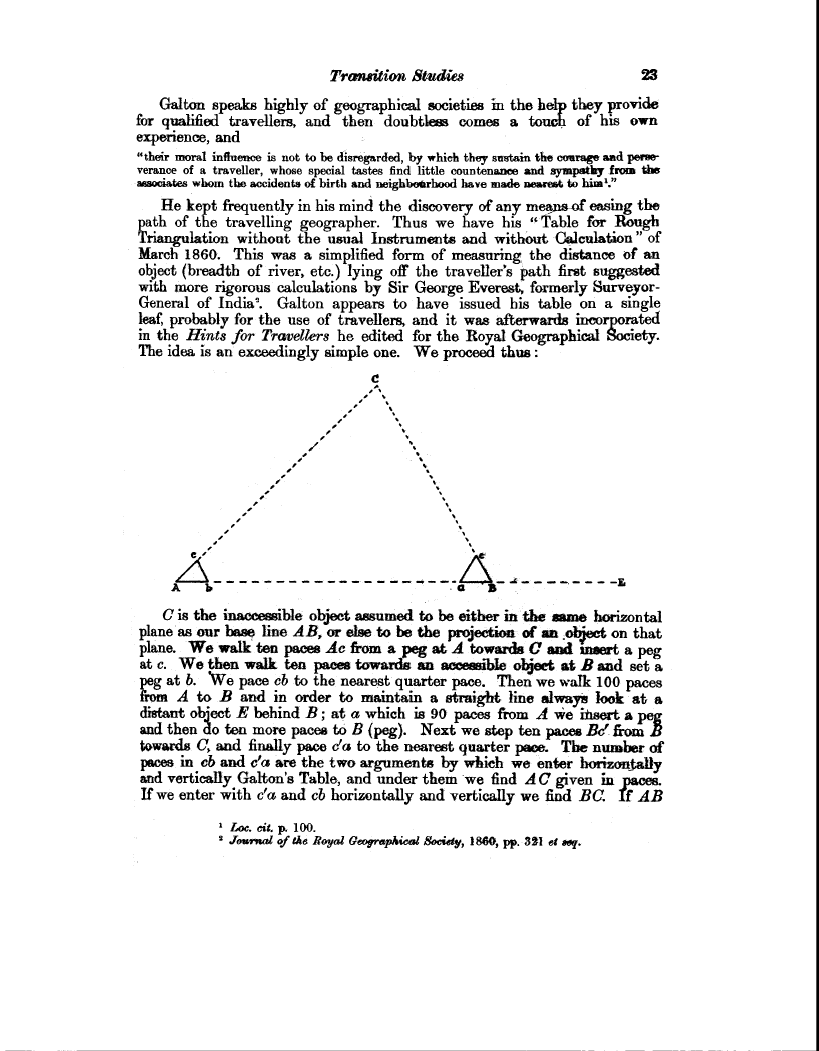Transition Studies 23
Galton speaks highly of geographical societies in the he they provide for qualified travellers, and then doubter comes a touch of his own experience, and
"their moral influence is not to be disregarded, by which they sustain the courage a ad perseverance of a traveller, whose special tastes find little countenance and sympathy from the associates whom the accidents of birth and neighborhood have made nearest to him'."
He kept frequently in his mind the discovery of any mead-of easing the path of the travelling geographer. Thus we have his Table far Rough Triangulation without the usual Instruments and without Calculation " of March 1860. This was a simplified form of measuring, the distance of an object (breadth of river, etc.) lying off the traveller's path first suggested with more rigorous calculations by Sir George Everest, formerly SurveyorGeneral of India'. Galton appears to have issued his table on a single leaf, probably for the use of travellers, and it was afterwards incorporated in the Hints for Travellers he edited for the Royal Geographical Society. The idea is an exceedingly simple one. We proceed thus
C is the inaccessible object assumed to be either in the same horizontal plane as our base line AB, or else to be the projection of an. ect on that plane. We walk ten paces Ac from a peg at A towards C and umert a peg at c. We then walk ten paces towards an accessible object at B and set a peg at b. We pace cb to the nearest quarter pace. Then we walk 100 paces from A to B and in order to maintain a straight line always look at a distant object E behind B ; at a which is 90 paces from A we insert a and then do ten more paces to B (peg). Next we step ten paces Bc'' from towards C, and finally pace ca to the nearest quarter pace. The number of panes in eb and c'a are the two arguments by which we enter horizontally and vertically Galton's Table, and under them we find A C given in pace& If we enter with c'a and cb horizontally and vertically we find BC. If AB
' Loc. cit. p. 100.
2 Journal of the Royal Geographical &Ciety, 1860, pp. 321 et seq.

